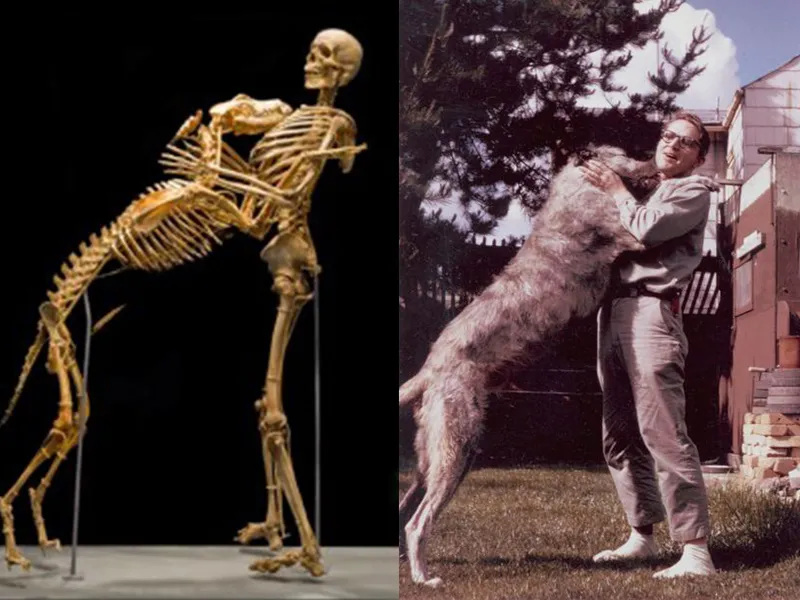Grover Krantz Donated His Body to Science, On One Condition…
“I’ve been a teacher all my life,” Krantz said, “and I think I might as well be a teacher after I’m dead, so why don’t I just give you my body.”
/https://tf-cmsv2-smithsonianmag-media.s3.amazonaws.com/filer/18/1e/181e68ee-4832-4b99-8278-c32b816a3aa5/groverclyde.jpg)
Grover Krantz (1931-2002) was known as a teacher, a loving pet owner, an eccentric anthropologist, and the first serious Bigfoot academic. Seven years after losing a battle to pancreatic cancer, Krantz's reputation is still well preserved, in more ways than one. His skeleton and that of his giant Irish Wolfhound Clyde are now on display at the 5,000 square foot exhibition "Written in Bone: Forensic Files of the 17th-Century Chesapeake," which opened last Saturday at the Smithsonian's National Museum of Natural History.
The exhibit takes visitors into the world of the bone biographer—how skeletons can be read to solve colonial-era mysteries or identify the victims of war crimes in Croatia. Visitors can see the skeletons of Krantz and Clyde in a loving embrace at the end of the exhibit as an example of how body donations are put to use as educational tools.
Before Krantz died, he said to Smithsonian anthropologist David Hunt, "I've been a teacher all my life and I think I might as well be a teacher after I'm dead, so why don't I just give you my body." When Hunt agreed, Krantz added, "But there's one catch: You have to keep my dogs with me."

So after Krantz passed, there was no funeral. Instead, his body was shipped to the University of Tennessee's body farm, where scientists study human decay rates to aid in forensic investigations. From there, he and his wolfhounds were housed in a green cabinet in the labyrinthine back halls of the Natural History Museum, the same place they keep the dinosaur bones. Hunt even has Krantz's baby teeth.
Krantz's presence at the exhibit is one of the more personal touches to the "Written in Bone" exhibit. Co-curators Douglas Owsley and Kari Bruwelheide, two of the nation's top forensic anthropologists, were colleagues of Krantz, a Washington State University professor. He played a role in the famous Kennewick Man case, one of the biggest of Owsley's career, as one of the anthropologists arguing for the study of an 8,400-year-old skeleton uncovered on Washington State park area. (Which, after much controversy, was finally allowed.)
Krantz was a true teacher in life, and his skeleton, on display for the next two years, will ensure he is one in death as well.
/https://tf-cmsv2-smithsonianmag-media.s3.amazonaws.com/accounts/headshot/joseph-caputo-240.jpg)
/https://tf-cmsv2-smithsonianmag-media.s3.amazonaws.com/accounts/headshot/joseph-caputo-240.jpg)